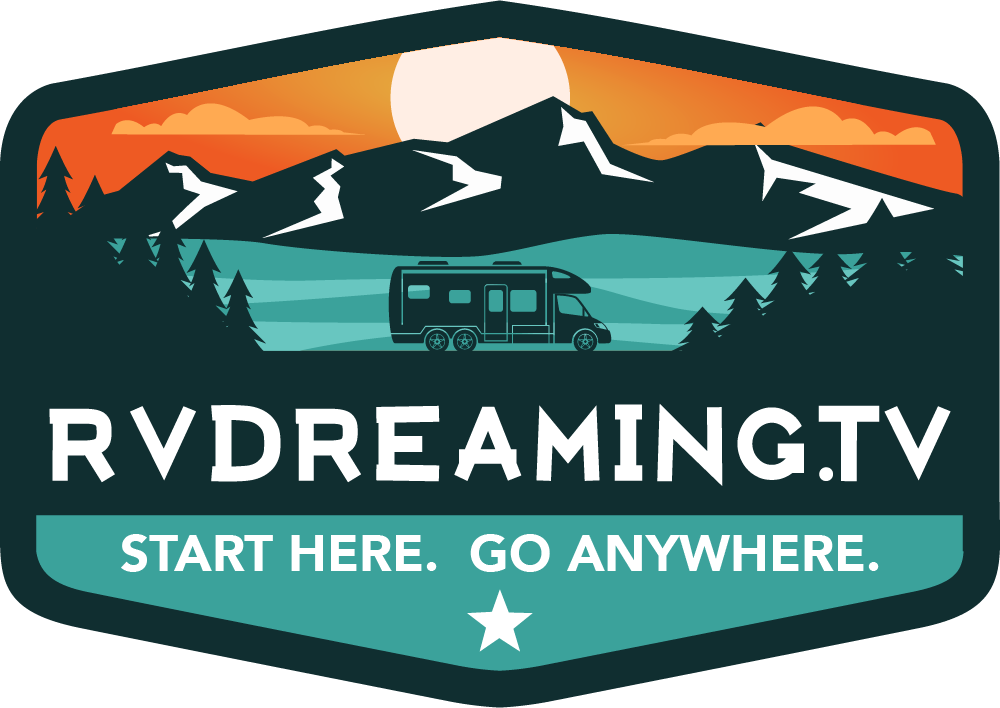
First Steps to Full-Time RVing
Are you tired of the 9–5 grind? Are you ready to hit the open road and see the country (or the world)? Then it might be time to consider full-time RVing.
RVing offers a unique lifestyle that you can tailor to fit your needs. Whether you’re looking to save money, see the country, or work from your RV (Recreational Vehicle), there are ways to make it happen.
In this article, we’ll explore some of the first steps you need to take to RV full-time. We’ll discuss things like budgeting, finding the right RV, downsizing your life, and more. So if you’re ready for a change, read on!
Summary:
– RVing can save money by living rent or mortgage-free
– Consider what kind of RVing experience you want to find the right RV for you
– To fit into an RV, you’ll need to downsize your life
Full-Time RVing on a budget
RVing can be a great way to save money. If you’re tired of paying rent or a mortgage, consider downsizing your life and hitting the open road in an RV.
You’ll be able to travel as you please, and you can offset the cost of travel by finding workcamping opportunities.
Additionally, boondocking can save you on gas and campground fees. So if you’re looking for a more affordable lifestyle, RVing might be right for you.
What kind of RV is right for you?
When trying to determine what kind of RV is right for you, it’s important to consider what kind of RVing experience you want.
Do you want to be able to go off-roading? Do you want to be able to camp in more remote areas? How important is it to you to have a lot of storage space?
Once you’ve decided what’s important to you in an RV, then you can start narrowing down your choices. If you want an RV that can go off-roading, then you’ll want something with a higher clearance and four-wheel drive.
Perhaps you don’t care about being able to go off-roading, then a lower-clearance RV will be just fine. If storage space is important to you, then something like a fifth wheel or travel trailer might be a better choice than a motorhome.
There are so many different types and styles of RVs on the market that it can be overwhelming trying to figure out which one is right for you. Figure out what’s important to you, and do research on the different types of RVs available. Only then will you be sure you have found the perfect one for your needs.
Take your time with this decision. Choosing the wrong RV for your needs can be an extremely painful and very expensive mistake. Don’t rush into buying the first rig you see. Have a list of must-haves and stick to them. There’s an RV out there that’ll meet your needs.
How to downsize your life to fit into an RV
RVing can be a great way to save money, but to do so, you need to downsize your life to fit into an RV. Here are a few tips on how to do just that:
Get rid of unnecessary belongings
One of the best ways to save money while RVing is to get rid of unnecessary belongings. You don’t need as much stuff in an RV, so take some time to sort through your things and get rid of anything that you don’t need. This includes clothes, kitchen items, décor, and more. You can sell items online, have a garage sale, or donate them to charity.
Find storage solutions for the things you can’t part with.
You may have things that you just can’t part with, then you’ll need to find storage solutions for them. Holding onto items could mean renting a storage unit or finding a friend or family member who’s willing to store items for you.
Additionally, you could look into other options such as storage pods or self-storage units. Just know, the storage options aren’t cheap, so be sure whatever you want to store is worth the cost.
Choose the right RV for your needs
Not all RVs are created equal. When you’re downsizing your life to fit into an RV, it’s important to choose the right RV for your needs.
There are many different types of RVs on the market, so do your research and find the one that’s best suited for the way you want to live.
For example, if you want an RV that’s easy to drive and maneuver, then something like a Class B motorhome might be a good choice. On the other hand, if storage space is important to you, then something like a fifth wheel or travel trailer might be better suited for your needs.
Also, consider how many people and pets you’ll be traveling with. Having a newborn baby probably isn’t the best setup for a Class B motorhome. However, if you plan to travel solo, a smaller rig or van will do you just fine.
You should also consider the length of your rig. Many national parks don’t allow rigs larger than 35 feet. Plus, many RV parks only have limited spaces for rigs larger than 38 feet.
Make money while on the road
One of the best ways to offset the cost of travel while RVing is by making money on the road. There are many ways you can do this. Working as a campground host, doing odd jobs (such as yard work or pet sitting), or even starting your own business. If you have a special skill or talent, there’s sure to be a way for you to make money with it while traveling in your RV.
Plan your route
When you’re downsizing your life, a few months or more of planning can go a long way. By mapping out your route and making reservations ahead of time, you can avoid a lot of the stress that comes with RVing.
Planning will also give you the opportunity to research campgrounds and attractions along the way so that you can make the most of your trip. And getting ready for full-time RVing, it’s important to plan your route ahead of time.
Planning will help you avoid getting stuck in one place for too long and will also allow you to budget for gas and campground fees.
Additionally, planning your route will give you an opportunity to see all of the amazing places that America has to offer
RVing with pets
RVing with pets can be a great way to travel with your furry friend. However, there are a few things to consider before hitting the road. First, you’ll want to find pet-friendly RV parks.
Many parks have restrictions on the type and number of pets allowed, so it’s important to call ahead and make sure your pet is welcome. Second, you’ll need to make sure your pet is trained to stay calm while the RV is moving.
Giving your pets a safe space is important for both the safety of your pet and the other passengers in the RV. Third, you’ll need to have a defined space for your pet in the RV.
A defined space will help keep your pet from getting underfoot and will give them a place to feel safe and comfortable. Fourth, you’ll need to exercise your pet regularly. Regular exercise will help them stay healthy and happy on the road. Finally, you should take some time to acclimate your pet to life on the road.
New items may include using portable water and food bowls and investing in a pet thermostat. By following these tips, you can make life on the road easier for both you and your pet.
Working from your RV
Working from your RV can be a great way to earn a living while traveling. However, there are a few things you need to keep in mind to make it work.
First, you need to have a job that allows you to work remotely. Not all jobs will allow this, so you may need to get creative.
Second, you’ll need to make sure your RV is set up with adequate internet access. Internet may be the difference between finding a crappy campsite with cellular access, versus a beautiful spot with a view without the Internet.
Third, if you plan on working from your RV full-time, you’ll need to make sure you have enough space to set up a home office. Consider getting a larger RV or sacrificing some of your living space.
Fourth, you’ll want to consider the cost of living in your RV and whether you can afford it. Expenses include things like gas, campground fees, and food.
Conclusion
There are a lot of things to consider before moving full-time, not an RV. This list is by no means complete. However, taking these things into consideration, you can make working from your RV a reality.
For more information on transitioning to full-time RVing, check out our Full-Time Freedom video series by clicking here.

















Trackbacks/Pingbacks